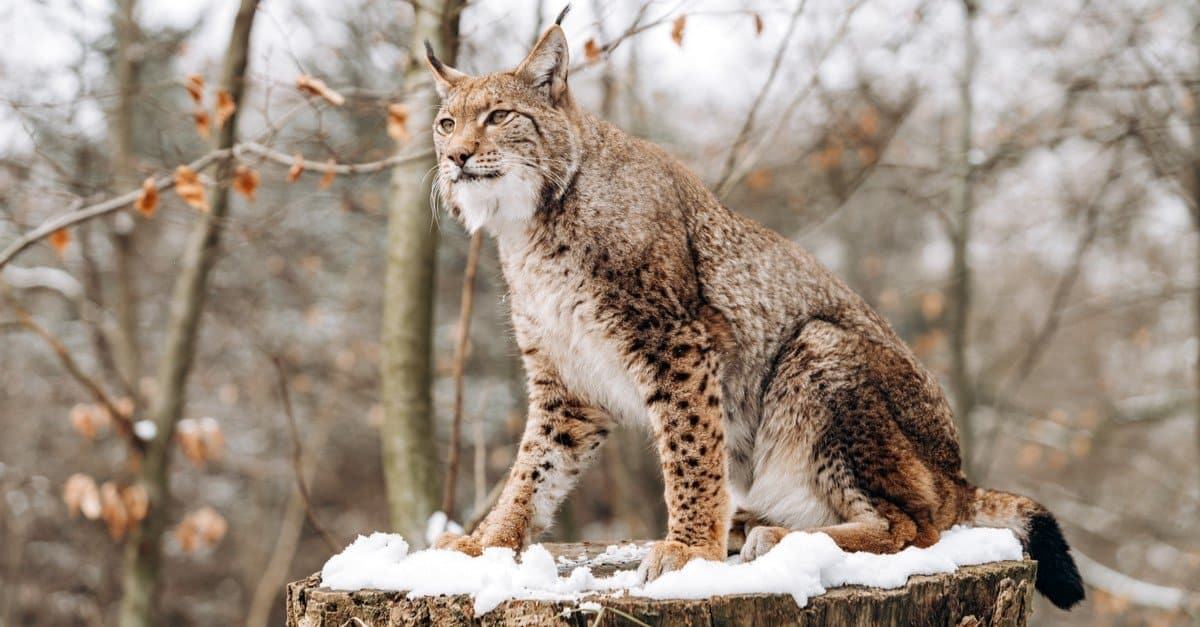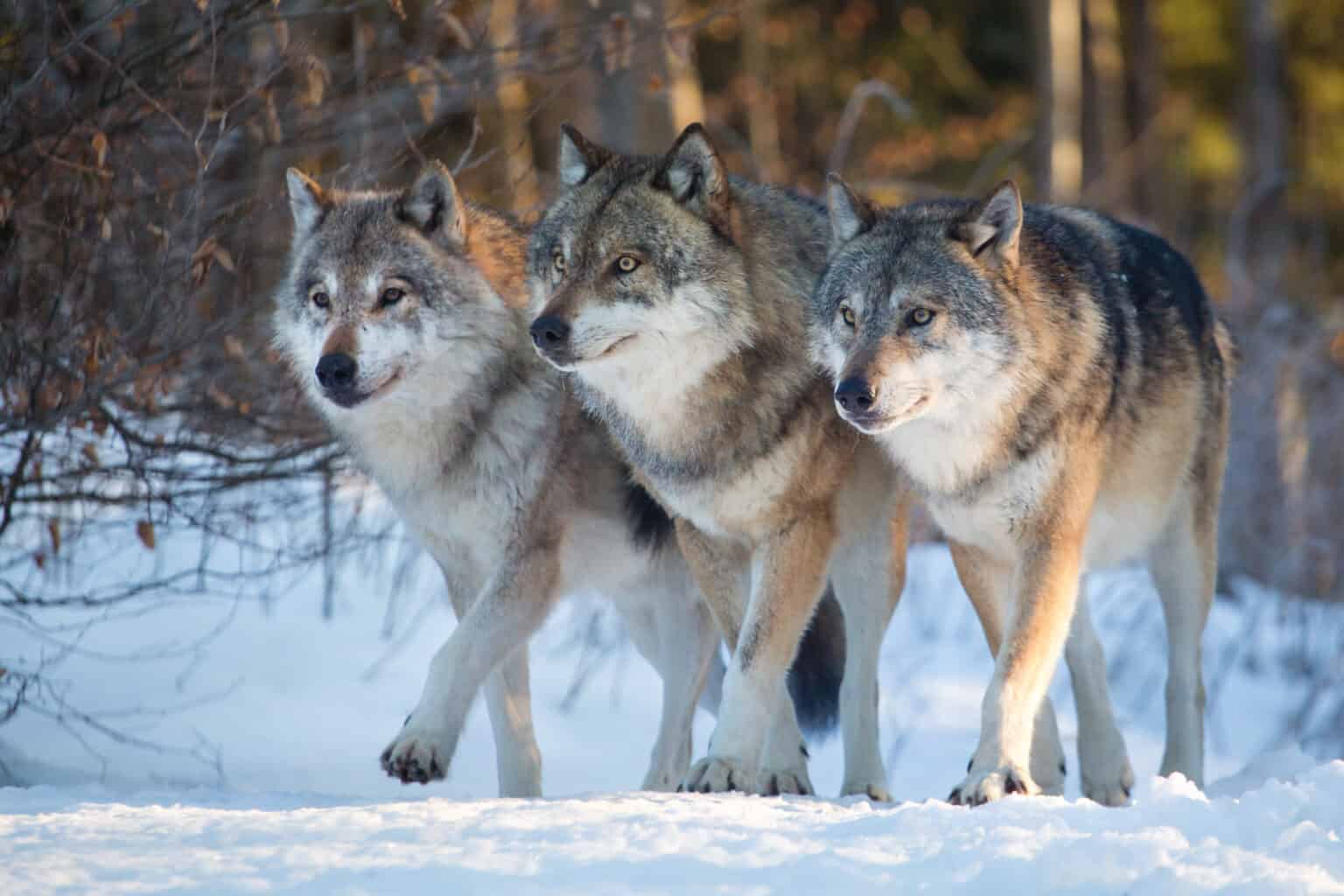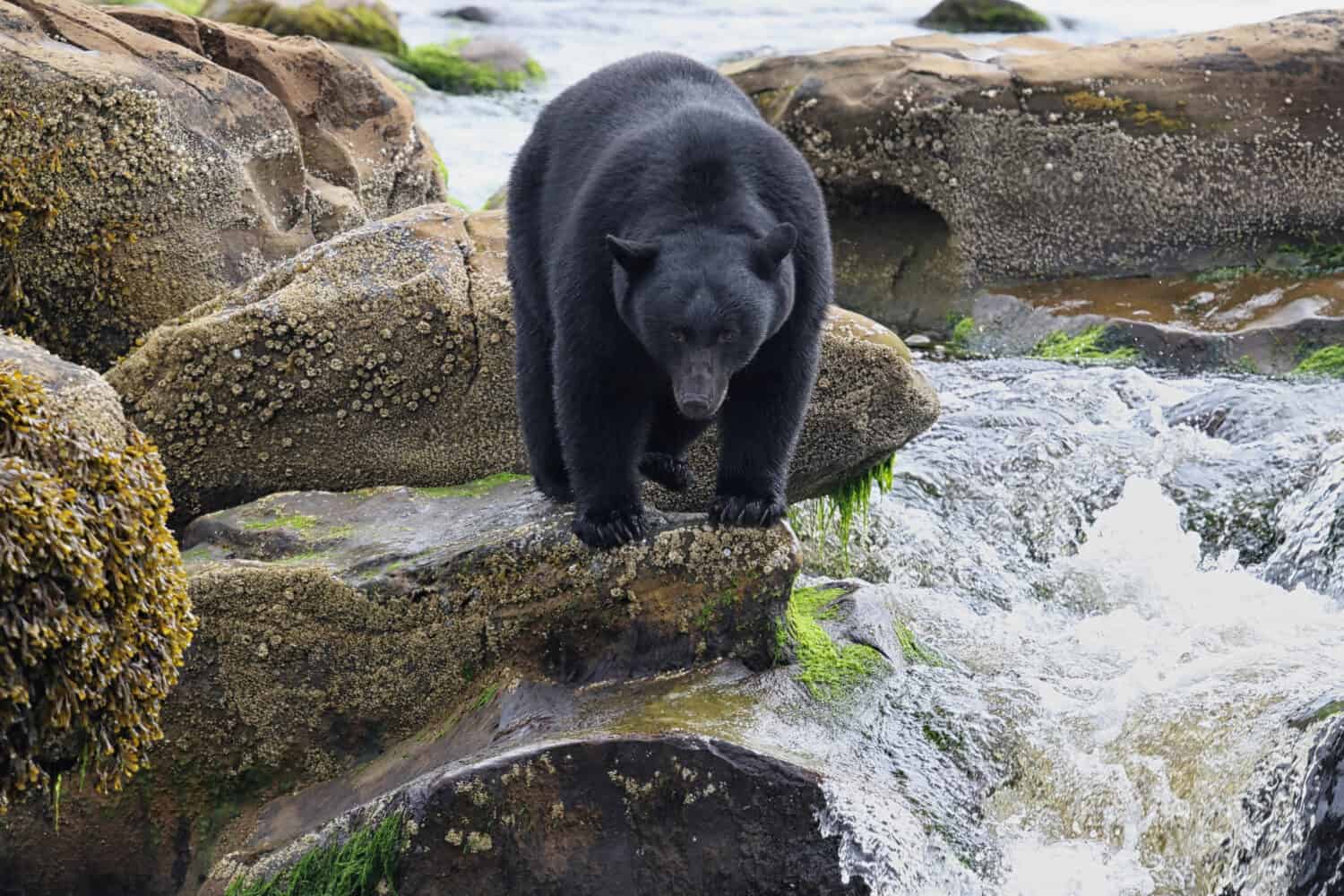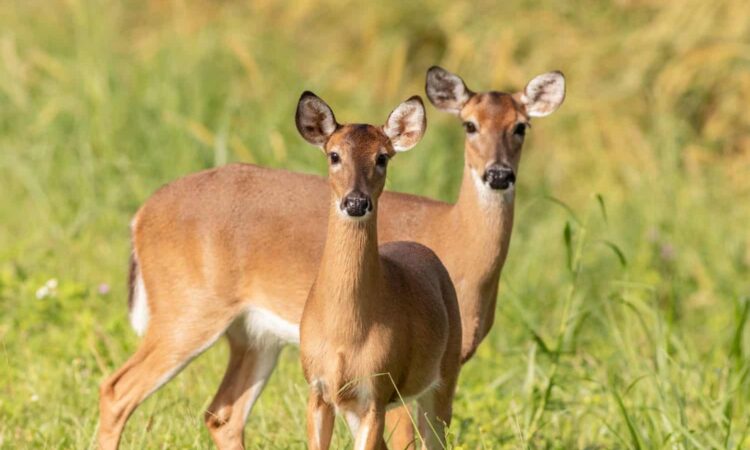Minnesota is a haven for scenic views of Lake Superior and the surrounding landscape. Gooseberry Falls State Park is part of that haven, attracting more than 750,000 visitors annually. The park encompasses the majestic Gooseberry Falls, with upper, mid, and lower overlooks from which to take in the sights. Not far from that is Agate Beach and its overlook, which offers a breathtaking vantage point of Lake Superior. Its rocky shoreline is paradise for hikers to explore tide pools, go rock hunting, and observe wildlife along the coast of the Great Lakes. Whether visitors are trekking the scenic Glitchi Gummi Trail or taking a beat at Catwalk Bridge, there are plenty of animals to look out for.
White-Tailed Deer

The white-tailed deer (Odocoileus virginianus) is established throughout most of the United States and Minnesota. Its presence in Gooseberry Falls State Park remains an essential part of the park’s ecosystem. It’s identifiable by its distinctive white-tipped tail and its status as the most common native deer species in Minnesota. These deer are typically skittish and prefer to avoid humans. However, hikers and campers might see them during the hours of dawn and dusk when they’re most active.
Coyote

Coyotes (Canis latrans) are established in much of Minnesota, but can be found established near the shore of Lake Superior. This makes Gooseberry Falls State Park a prime destination for these canines. The park offers enough protected woodlands, with easy access to the water’s edge. It’s also home to many prey of the coyote, including rodents and small mammals. Coyote sightings are rare but not unheard of. Although they are primarily active at dawn and dusk, they prefer to avoid humans during the day.
Fisher

This carnivorous mammal is closely related to the weasel and American marten. Fishers (Martes pennanti) have brown and black fur, with long, slender bodies. They primarily inhabit woodlands with dense foliage. Fishers are solitary animals and can be elusive, but are mainly active at dawn and dusk. Visitors hiking through the woods may have the chance to glimpse one of these animals, as they’re known to climb and hide in trees.
Mountain Lion

Also known as the puma or cougar (Puma concolor), mountain lions are exceptionally rare in Gooseberry Falls State Park. Sightings are infrequent, and hikers rarely encounter this big cat species. However, that doesn’t mean they don’t traverse the park’s terrain. Mountain lions prey on many of the park’s smaller mammal species; however, there is no evidence of a resident population or regular hunting activity within the park. Sightings are scarce and typically involve transient individuals passing through the region. They’re skilled apex predators, which means you’re not likely to hear or see a mountain lion. Thankfully, human-big cat encounters are rare.
Canada Lynx

Not to be confused with the bobcat, the Canada lynx (Lynx canadensis) is established throughout parts of Canada and the northern U.S. While it’s only 15-30 pounds, it’s still a formidable predator to small mammals in Gooseberry Falls State Park. This big cat is highly elusive and prowls primarily at night since it’s nocturnal. Occasionally, a Canada lynx will hunt during the day, especially during a harsh winter or if food is scarce. Therefore, only a lucky handful of visitors might see this animal if they time their visit correctly.
Moose

Moose (Alces americanus) are well established throughout Minnesota. They’re no strangers to Gooseberry Falls State Park, where their primary diet of foliage and berries is abundant. While some would be delighted to see such a majestic animal in the wild, hikers and campers should exercise caution. Moose can be especially aggressive when they feel threatened, particularly if they feel cornered or during calving or rut season. They can weigh as much as 1,500 pounds, making them a force to be reckoned with.
Gray Wolves

Grey wolves (Canis lupus) are occasionally sighted near the Great Lakes, particularly in the Gooseberry Falls region. These canines are the largest of their family, and large wolves can weigh nearly 100 pounds. Their gray, black, and white coats are designed for camouflage, helping them blend in easily with the snow-covered backdrop of a Minnesota winter. They tend to be more active during the day in colder weather, but are typically seen during the hours of dawn and dusk, hunting deer and small mammals.
Black Bears

Access to the shoreline is what might be so attractive to a black bear (Ursus americanus) in Gooseberry Falls State Park. It provides access to fish and a place to forage, making it ideal for bears getting ready to enter torpor. While sightings are infrequent, hikers do occasionally come across a black bear searching for food or simply passing through. Most of the time, black bears are skittish and try to avoid humans, which means human-bear encounters are rare.
